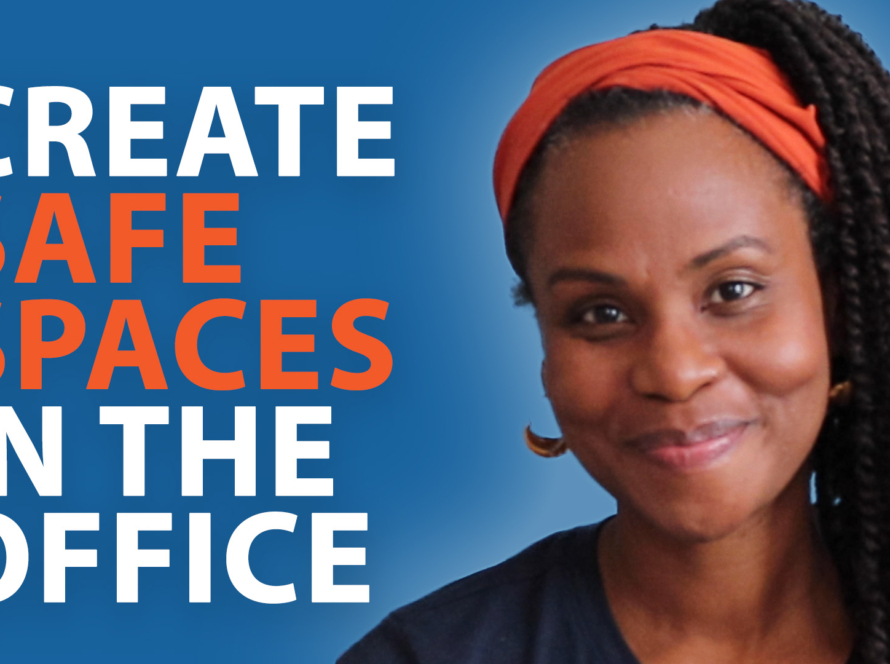Inclusive marketing is the future of marketing, so here are five strategies you can use to start attracting more diverse consumers in 2022 and beyond.
Each year as more business leaders start to engage with and try to connect with people from more diverse communities and build an inclusive brand, consumers, particularly those from underrepresented and underserved communities, are starting to notice. But just because a brand starts being more inclusive and starts trying to engage people from underrepresented and underserved communities doesn’t mean that people who are from those communities will automatically just be receptive to those advances and that attention from a brand. Increasingly consumers are expecting a lot more from the brands that they engage with and that they buy from and they’re starting to even be a heck of a lot more vocal about their expectations. So here are five inclusive marketing principles that you need to incorporate into your strategy so that you can be more effective with your inclusive marketing efforts.
Authenticity
Performative marketing, and statements don’t really go over so well. And whenever consumers feel that a brand’s actions are performative rather than genuine they often resent those efforts by a brand. They feel inauthentic, they feel untrue, they feel like they’re just really a pale attempt for a brand to get these consumers to buy more of their stuff.
So what’s the fix for this? Change the way you market your products, services, and experiences to the people that you want to serve to make sure that it’s more inclusive. Gelaine Santiago is the CEO of Cambio and Co. and she also is a content marketer who specializes in storytelling, particularly for founders from communities of color.
She advises that brands should approach authenticity with their marketing the same way chefs use salt when they’re cooking. She says, “People who cook a lot, oftentimes you don’t just use salt at the end, but you actually use at the beginning and the middle and again at the end of your process of cooking. That really changes the flavors. You end up with something that’s really deep and rich, and the salt brings out these nuances in terms of the flavor of the dish. But if you are someone who doesn’t use salt until you sprinkle it at the very end, then what you end up with is something that just tastes salty. You know the salt is there. You can see it. It obviously apparent that you use salt, but it’s very different from baking it into the whole process.”
So using this analogy that Gelaine explained, marketing becomes a lot more authentic whenever it’s inclusive from start to finish, from every part of the process, rather than just going through, creating what you’re going to create, and then trying to throw something on to make it inclusive at the end. The problem is that a lot of brands try to make their campaigns or their product, services, and experiences inclusive at the end by “throwing salt on it” by, let’s say, at a photo shoot making sure that they’re trying to put in some diverse models or using diverse stock photography or something of that matter that makes it feel like they’re checking a box at the end of the process to make something that wasn’t designed to be inclusive, feel inclusive. No bueno.
Bake inclusivity through your entire marketing process by incorporating people who are part of the communities you want to serve into whatever it is that you’re doing. Incorporate them into the planning, the production, the strategy, every part of the process should include people who are parts of the community that you serve. Follow the principle, “Nothing about us without us,” as a guide for you as you work to deliver products, services, experiences, and communications that are authentic to the people you want to serve.
Focus on Teams
As more brands have started to engage underrepresented and underserved communities, more and more people from these communities are starting to get skeptical about these brands and what their intentions are. As a result, they’ve started to look for additional proof that actually demonstrate that the brands who say that they value diversity, equity, inclusion, and belonging, actually value those things and the communities that they are a part of. A big source of proof that consumers are looking for comes from assessing the makeup of the internal teams of the brands who start vying for their attention. So if a brand says that they value black, indigenous, and other people of color highly, but they don’t have any of those people represented in a significant way on their team, then their claims come off as disingenuous. The talent that you invest your time and resources in are a very strong indicator of how inclusive your brand is.
Customer Experience
Inclusive marketing and customer experience are inseparable twins. They go hand in hand. It is essential for brands to design a vision of the experiences they want to deliver to all of their customers along every part of their customer journey and then to build a plan that actually allows them to deliver on that vision along every one of your touchpoints. When you have a very clear vision on how to deliver remarkable experiences to the people that you serve that make them feel like they belong with you, you’ll design experiences that have as little friction as possible for those people that you want to serve as well.
Besides, people from underrepresented and underserved communities want to know that you took the time to think of them in advance, rather than trying to scramble at the last minute to retrofit something or make something work that wasn’t designed for them in the first place. For instance, a lot of times brands will have some sort of accommodations for people who have some sort of difference, like dietary restrictions, people who need a plus size section, people who need a translator or speak a different language from the primary one that’s spoken in the area that they’re in. While these accommodations often allow people with differences to get their needs met, it often requires them to raise their hands to acknowledge that they are different from the masses. Different people have different relationships with the differences that they have and they don’t always want to have to let the world know that they’re different to get their needs met.
As a result, a lot of times people might feel embarrassed, ashamed, or frustrated, and they don’t want to go through the process of having to go those extra steps to get the support that they need. Instead, make sure that you are delivering experiences that makes everybody you’re serving feel like they belong, that you’re not making people feel like outcasts or outsiders or making it very clear that they’re different from everybody else. Make it easy for them to self-select what they need without having to call attention to what makes them different to get their needs met with you.
In-Depth Features & Storylines
Representation matters, we know this, but not all representation is created equal. As more brands are starting to embrace a broader diversity of people throughout their marketing mix, consumers are starting to say, “Listen, it isn’t enough just to include people from underrepresented and underserved communities in your visual imagery.” For people to believe that your brand is inclusive, they want to see people who look like them or who they aspire to be in prominent roles in the storylines and the features and the experts that you feature.
Gone are the days where people from underrepresented and underserved communities are happy or accepting of people who are like them who are just token characters who have non-speaking roles or who are there as sidekicks or in very stereotypical roles. People don’t want that anymore. I don’t think they ever actually wanted it, but they were accepting of it because there weren’t many other options. But people are not taking that anymore at all. They want in depth, nuanced features of people who are like them or who they aspire to be. They want to see features, experts, and storylines of people whose lived experiences are very similar to the ones that they can identify with. They want to laugh, cry, and connect with people who walk the same walk that they do. That depth and connection of understanding can’t happen when the storylines are superficial or non-existent. When it comes to inclusive marketing, going deep outperforms shallow and superficial any day of the week.
Consistency
A common mistake that brands make with inclusive marketing is doing it sporadically. They show up for big celebrations and important events and then they ghost people. They don’t stick around for the long term. So a brand may try to celebrate Black History Month or Pride Month or Women’s History Month or Hispanic Heritage Month and then they just disappear for the rest of the year. This kind of behavior doesn’t work well for building relationships with any community, let alone people who are already marginalized and are unfortunately accustomed to being treated badly and ignored. So once you decide that there are specific communities that you want to engage with, build a plan for how to engage them all year long. Sure, celebrate them when the whole world is doing it for special events and occasions, but don’t just stop there.
Make sure that you are walking beside these communities all year long, during the good, the bad, the ups and downs. Show your support. Fight with them for the causes that are important to them and they care about. Make sure that you are there showing them that you care about them beyond just when it comes to them buying your stuff or when it’s convenient for you to do so. Quality, lasting, loyal relationships aren’t built and nurtured through popping in and out every now and then, especially when everybody else is doing so. They’re built by staying there through the thick, through the thin, through the ups, through the downs, through the goods, through the bad, and everything in between. Building an inclusive brand that customers, particularly those from underrepresented and underserved communities gladly give their loyalty to is possible when you commit yourself to doing the work of building an inclusive brand over time.
Building An inclusive Brand
Now, if you need more help building an inclusive brand, I’ve got you covered. Go ahead and grab my Inclusive Marketing Starter Kit. Head on over to inclusivemarketing.co/starterkit to grab it. And if you liked this episode, I would so appreciate it if you would give this video a like, subscribe to the channel so you never miss an episode, and then share it with some friends.
Until next time, remember, everyone deserves to have a place where they belong. Let’s use our individual and collective power to ensure more people feel like they do.



